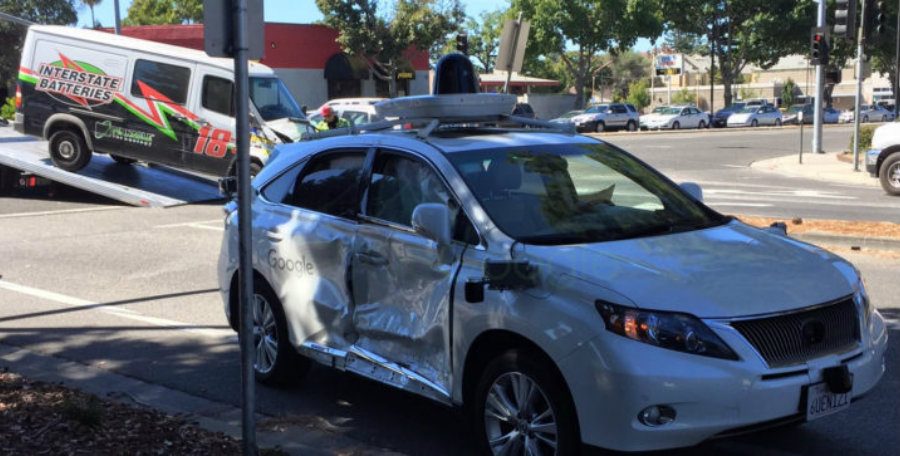One of Google’s autonomous Lexus vehicles suffered an accident after a van ran a red light in Mountain View, California, last Friday afternoon. Even though no one was injured, the vehicle suffered substantial damage which makes this the worst crash for Google’s self-driving car.
According to a statement by the company, the Google car was not the responsible for the accident involving a van. The autonomous car started moving north on Phyllis Avenue until it reached an intersection. The car, with the light still green, kept running and was hit on the right side by another driver’s van.
Local TV station KRON reports that a Google employee was inside the vehicle at the time of the crash, but was not hurt. The vehicle was in fully autonomous mode at the moment of the accident and the employee, foreseeing the accident, switch to manual and tried to apply the brakes, but did so too late.
A video shows the Lexus being towed and taken away, with clear signs of the damage purported by the van. The doors on the right side of the vehicle were almost entirely ruined.
Pros and cons of autonomous vehicles
“THOUSANDS OF CRASHES HAPPEN EVERYDAY ON U.S. ROADS, AND RED-LIGHT RUNNING IS THE LEADING CAUSE OF URBAN CRASHES IN THE U.S. HUMAN ERROR PLAYS A ROLE IN 94% OF THESE CRASHES”, reads the statement by Google.
Google notes the company is developing autonomous cars, to make driving roads safer for everyone, and human error will always play a factor. Google cars have been already involved in some minor crashes, all of them without any personal injury.
On February of this year, however, a Google vehicle participated in a collision with a public transit bus, again, in Mountain View.
The government’s ruling for autonomous driving
The crash happened only three days after the U.S. Department of Transportation, by National Highway Traffic Safety Administration (NHTSA) released a report called the Federal Automated Vehicles Policy.
The document is entirely available online in PDF format and contains current information, legislation, and guidelines for autonomous vehicles around the country. It also helps unify the various state regulations that existed before it into one regulatory system.
According to Tech Crunch, this document forces autonomous vehicle manufacturers into sharing data concerning vehicles crashes and other abnormalities with each other and with the government, an order that is already being contested by various automotive industries.
Source: Telegraph



